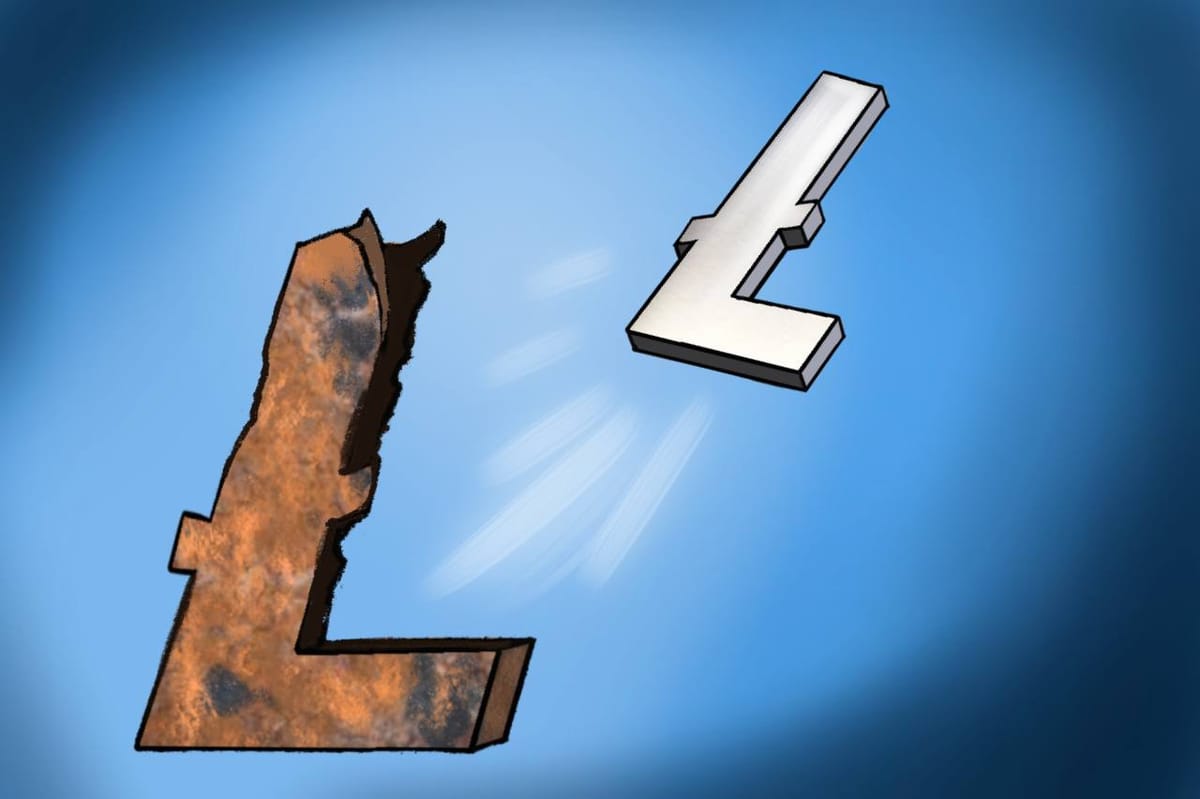
On August 2, 2023, crypto miners’ reward for creating a new Litecoin block is dropping from 12.5 to 6.25 LTC. Market expectations preceding the halving event have been leading LTC price to swing both up and down over the past few months. However, now that the dust is settling, the price of “the silver to Bitcoin’s gold” is expected to decrease.
Often as adoption of a blockchain increases, so too does the value of its token. To control price inflation, the code of every Proof-of-Work (PoW) blockchain includes a halving event. Happening once every specified number of blocks, halving decreases the number of tokens that come into circulation every time a block is mined.
With a market cap of 84 million coins, and 87% of these already in circulation, Litecoin halves every four years. After 2015 and 2019, the third halving is taking place today, about 20 days earlier than initially expected.
Despite the increasing scarcity, halving isn’t a phenomenon that necessarily impacts the token’s price. The price fluctuations observed in the last couple of months are a “narrative to create volatility and speculation used by investors and traders,” according to Matteo Greco of Fineqia International. Due to the Suave Spring that crypto markets have been going through, this pre-halving hasn’t been as hot as previous ones.
In conversation with Blockworks, the research analyst noted that LTC price increased a maximum of 40% in June 2023, in comparison to 824% in 2015 and 525% in 2019. But now that the halving is past, speculation will settle, and the price will likely decrease.
“Litecoin’s halvings seem to be a ‘buy the rumor, sell the news’ event on both prior occasions with a large run-up in price in the months before, and a reversal in price action after, suggesting the supply shock is priced in” Max Shannon
Price fluctuations aren’t exclusively due to speculative trade, and credit is due to Litecoin’s community continuously putting in efforts to improve the network.
After losing ground to more hyped cryptos and innovative ecosystems, the project created by Charlie Lee in 2011 is regaining popularity due to its long-term reliability and ventures into new projects.
Given it is a fast, affordable, and safe means of peer-to-peer (P2P) payments, Litecoin is today one of the most traded and widely accepted cryptocurrencies. Furthermore, in May its community launched an analogue of Bitcoin Ordinals, and the related LTC-20 tokens, which led transactions and daily unique addresses on the network to spike.

